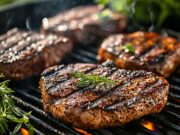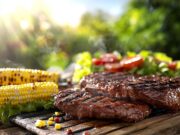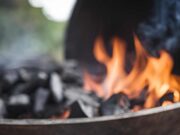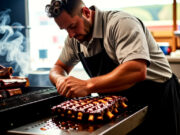Smoking meat is a culinary art that significantly enhances flavor, tenderness, and overall enjoyment. The choice of wood is essential in this process, as different types impart distinct tastes to various meats.
This guide will help you understand the fundamental differences between hardwoods and softwoods, identify the best wood varieties for specific meats, and master key techniques for effective wood utilization.
Furthermore, you will find valuable tips on selecting high-quality wood to elevate your smoking experience. Prepare to unlock the secrets to achieving perfectly smoked meats.
Key Takeaways:
- Choose hardwoods over softwoods for smoking meats as they burn slower and provide a more intense flavor.
- Consider the type of wood when selecting the best wood for smoking different meats, as each wood imparts a unique flavor profile.
- Timing and technique are important factors when using different types of wood for smoking, so research and experiment to find the perfect combination for your meats.
Understanding Wood Types for Smoking
Understanding the various types of wood for smoking is essential for any BBQ enthusiast aiming to enhance your outdoor smoking experience. Each type of wood imparts its own unique flavor, aroma, and smoking characteristics.
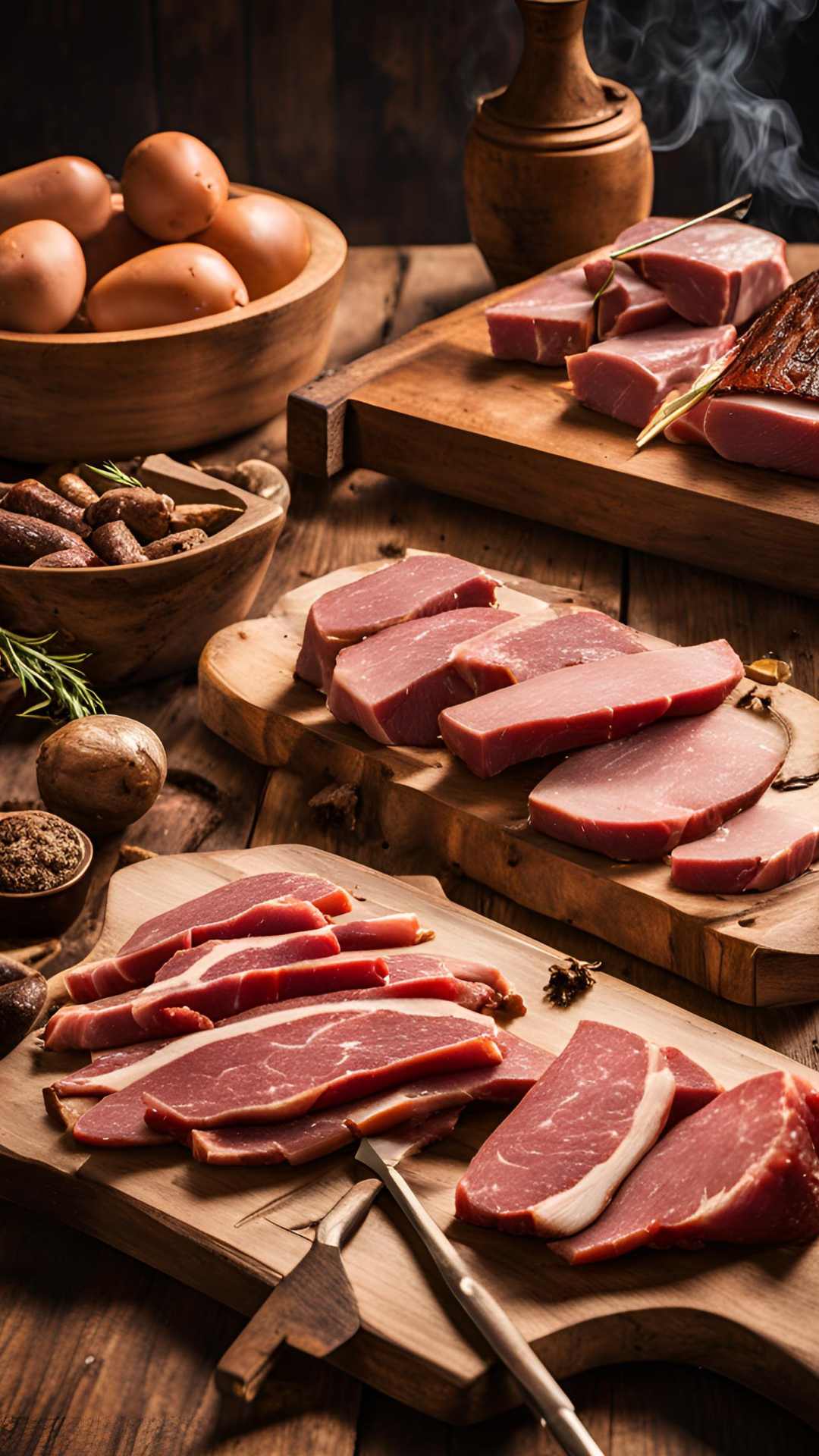
Among the most popular options, hardwoods such as hickory, oak, maple, and mesquite provide a rich, intense smokiness, while softer woods like apple and cherry offer a sweeter, more delicate touch that complements lighter meats like poultry or fish.
This knowledge is crucial in ensuring that your smoked meats not only taste exceptional but also achieve the appropriate tenderness and texture according to their respective flavor profiles.
Hardwoods vs. Softwoods
When considering smoking, it is essential to understand the distinction between hardwoods and softwoods, as it significantly impacts the flavor and quality of the smoke produced during the process. Hardwoods, such as hickory and oak, are dense and provide a longer-lasting, intense smoke that enhances the richness of smoked meats. In contrast, softwoods, like pine, can introduce a bitter flavor due to their high resin content, making them less suitable for smoking.
By grasping these differences, BBQ enthusiasts can make informed decisions about the type of wood to use to achieve their desired flavor profile in smoked dishes.
The unique characteristics of hardwoods, such as hickory, which offers a strong, bacon-like flavor, and oak, known for its mild and versatile smoke, can elevate meats like brisket and pork shoulder to new heights. Conversely, softwoods are often overlooked by seasoned smokers due to their tendency to produce a harsh and unpleasant smoke that can overwhelm rather than complement the meat.
For example, cedar and fir are typically avoided in traditional smoking due to their high resin levels, which can impart an acrid taste. By selecting hardwoods thoughtfully, you can achieve a balanced and flavorful result that enhances every bite.
Common Wood Types Used for Smoking
Among the common wood types used for smoking, hickory, oak, maple, mesquite, pecan, apple, and cherry are notable for their ability to impart unique flavors to a variety of meats and dishes. Hickory wood is often favored for its strong, smoky flavor, making it ideal for ribs and brisket, while oak provides a balanced smoke that pairs well with beef and pork. Maple offers a mild, sweet smokiness that complements poultry, and mesquite delivers a bold intensity that is particularly suited for outdoor cookouts. In contrast, softer woods like apple and cherry introduce a sweet, fruity note that enhances the delicacy of fish and game.
Each wood type not only contributes its own distinctive flavor profile but also interacts with the meat, creating a culinary experience that elevates barbecued dishes. For those looking to experiment, blending different woods can yield remarkable results; for instance, a combination of cherry and hickory creates a rich, sweet undertone that is excellent for smoked chicken. When using mesquite, incorporating oak can temper its intensity while still providing a robust flavor.
Understanding how these woods interact with various meat types enriches the smoking process and opens up unlimited creative possibilities.
How Wood Affects Flavor
The type of wood you choose for smoking plays a fundamental role in determining the flavor, tenderness, and texture of BBQ meats. The unique compounds released during the smoking process interact with the surface of the meat, creating distinct flavors.
Different woods can produce a spectrum of tastes, ranging from sweet and subtle to bold and smoky, enabling you to tailor your smoking techniques to suit specific cuts and types of meat.
By understanding how wood affects flavor, you can achieve mouthwatering results, whether you are smoking brisket, chicken, pork, or ribs, thereby enhancing the overall enjoyment of your culinary creations.
Recommended Woods for Different Meats
Choosing the right wood for smoking specific meats can significantly enhance their natural flavors and elevate your overall BBQ experience. Distinct types of wood are recommended for various meats. For instance, hickory is renowned for its bold flavor, making it an excellent choice for red meats like beef and pork. In contrast, mesquite provides an intense smokiness that pairs exceptionally well with game and brisket. On the other hand, fruit woods such as apple and cherry offer a mild sweetness, making them ideal for poultry and fish, resulting in fragrant, flavorful dishes that delight the palate.
Plus these popular options, walnut presents a rich, nutty profile that enhances the taste of richer meats, such as lamb, while pecan adds a subtle sweetness that complements pork beautifully. If you are looking to experiment with seafood, alder wood offers a delicate, earthy note that pairs well with salmon and white fish.
For those interested in a unique twist, combining different woods can yield delightful results. For example, mixing apple and hickory can create a wonderful balance of sweetness and depth. Understanding how different wood types interact with your chosen meats can significantly improve the smoking process and lead to unforgettable flavors.
When to Use Different Types of Wood
Understanding when to use different types of wood during the smoking process can significantly enhance flavor and ensure optimal results in your BBQ efforts. Each type of wood possesses unique characteristics that become prominent at various stages of cooking.
For example, stronger woods like hickory and mesquite are better suited for longer smoking durations or denser cuts of meat, while lighter woods such as apple or cherry can be introduced toward the end of the cooking process to impart a subtle flavor without overpowering the dish.
Employing the right timing and techniques is crucial in achieving that perfectly smoked outcome.
Timing and Techniques for Wood Usage
The timing and techniques you employ for wood usage in smoking are essential for achieving the desired flavor intensity and profile in your BBQ dishes. Specific strategies are crucial for introducing the wood to the meat. For example, beginning with a strong wood like hickory or mesquite at the start of the smoking process can establish a robust flavor base.
On the other hand, adding lighter fruit woods such as apple or cherry later can enhance sweetness without overpowering the main flavor. Mastering these timing techniques can significantly elevate your smoking skills and yield mouthwatering results.
Understanding when to incorporate different types of wood throughout the smoking process is vital, as it allows for a layered depth of flavor. A recommended strategy is to use a combination of woods; starting with a heavier wood during the initial phase and gradually introducing milder varieties ensures a balanced smokiness.
For instance, after a couple of hours, adding oak can introduce complexity without overshadowing the existing flavors. Additionally, it is beneficial to monitor the temperature, as cooler smoking allows the wood’s flavor to develop more gently, whereas higher temperatures might intensify harsher notes.
By experimenting with various wood combinations and timings, you can customize the flavor profile to complement different types of meats, enhancing each dish’s unique attributes.
Tips for Selecting Quality Wood
Selecting quality wood for smoking is essential to ensure clean combustion and superior flavor in your BBQ. The quality of the wood directly impacts the overall smoking experience.
When choosing wood, it is important to look for well-seasoned options that have been properly dried. Fresh or green wood can introduce unwanted moisture and bitterness, which can negatively affect the taste of your meats.
Additionally, clean combustion is crucial for achieving that perfect smoky flavor without unpleasant odors or ash that could compromise your barbecue.
Choosing Fresh and Dry Wood
Choosing the right wood—both fresh and dry—for smoking is crucial in achieving optimal flavor and performance in BBQ. The moisture content in the wood can significantly impact combustion and smoke output during the cooking process. Fresh wood, with its high moisture content, can lead to excessive steam and bitterness, which detracts from the intended flavor profile of the meats. On the other hand, dry wood ensures a clean burn, producing the ideal smoke that enhances tenderness and infuses delicious flavors into the food.
To ensure you have the best quality wood for smoking, look for seasoned wood that has been dried for at least six months. Checking the ends of the logs can reveal fissures, indicating dryness, while a lighter weight suggests less moisture. If you hear a sharp crack when splitting the pieces, that’s another strong indication that the wood is adequately dried. Additionally, the aroma can provide clues; dry wood tends to have a more aromatic scent compared to its fresher counterpart.
By following these steps, you can maximize the effectiveness of the smoking process, resulting in a barbecue experience that truly delights the palate.
Frequently Asked Questions
What factors should I consider when selecting wood for smoking different meats?
The type of meat, desired flavor, and cooking time are all important factors to consider when selecting the best wood for smoking.
What types of wood are best for smoking different types of meats?
Hickory is best for pork and beef, while mesquite is ideal for stronger flavored meats like lamb. Fruit woods, such as apple and cherry, are great for poultry and fish.
How do I know which wood will give the best flavor to my meat?
Generally, the rule is the stronger the meat, the stronger the wood. However, it is always best to experiment and find the combination that works best for your taste preferences.
Can I mix different types of wood when smoking meats?
Yes, you can mix different types of wood to create unique flavor profiles. Just make sure to use a combination that complements the type of meat you are smoking.
Is it necessary to soak wood chips before using them for smoking meats?
No, it is not necessary to soak wood chips before using them for smoking. Soaking may prolong the smoking process and may not add any significant flavor to the meat.
Can I use wood from my backyard for smoking meats?
It is not recommended to use wood from your backyard for smoking meats as it may contain chemicals or other contaminants that can affect the flavor of your meat. It is best to use wood specifically designed for smoking.







